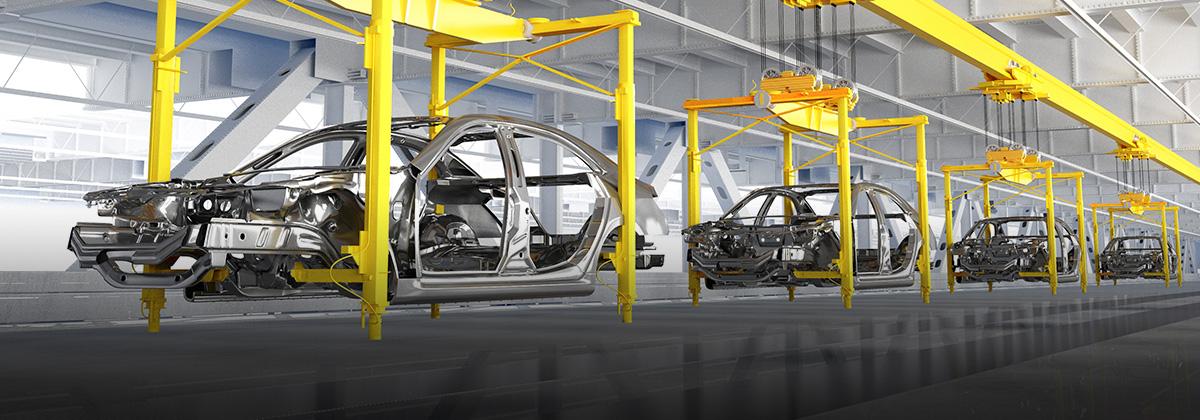With a highly competitive market and economic upheaval set to continue for some time, automotive manufacturers need to focus on efficiency, particularly when it comes to maintaining their buildings
According to figures from the Society of Motor Manufacturers and Traders (SMMT), 2020 was the worst year for the industry since 1992, with annual car registrations dropping by 29.4% to 1.63 million. That’s the equivalent to £20.4 billion in lost turnover. Nor was the start of 2021 any better, says the SMMT, with the lowest figure for car registrations since 1970.
This means that, automotive manufacturers and OEMs (Original Equipment Manufacturers) are going to need to focus hard on cost control and efficiency to give themselves the resilience and robustness needed to navigate the economic turbulence that’s ahead.
Cutting maintenance costs
And one key element of this agenda will need to be how buildings are managed and the Indirect procurement category of Industrial supplies for Maintenance, Repair and Operations (MRO). As Helen Alder, Head of Knowledge at the Chartered Institute of Procurement and Supply (CIPS) points out: “It’s easier to make the case for keeping tight control on MRO spend for plant and other operationally critical machines, but it’s just as important to look at MRO spend on buildings.”
And one key element of this agenda will need to be how buildings are managed and the Indirect procurement category of Industrial supplies for Maintenance, Repair and Operations (MRO). As Helen Alder, Head of Knowledge at the Chartered Institute of Procurement and Supply (CIPS) points out: “It’s easier to make the case for keeping tight control on MRO spend for plant and other operationally critical machines, but it’s just as important to look at MRO spend on buildings.”
Car manufacturing plants are normally big, complex operations – often based out of bespoke buildings – where, in an environment of lean manufacturing processes, heat, light and energy use all need to be closely regulated and maintained.
While, naturally, a lot of the MRO procurement focus will be on maintaining complex, and increasingly automated, production line processes, becoming “smarter” – more efficient and strategic – in your buildings maintenance MRO procurement can also pay significant dividends.
“Companies are often completely unaware of the amount of waste and inefficiency when it comes to MRO procurement for their buildings,” says Greg Sharp, Industry Sector Manager at RS. “While direct procurement will be tightly controlled, the sort of smaller, regular purchases for lighting, heating and other building maintenance costs tend to be ignored, but these mount up over the course of a year.”
Reducing supplier numbers
Sharp points out that the first step in creating efficiencies is consolidating suppliers. “MRO spend should be kept to a small group of key approved suppliers so that you have a contract based on certain service levels that meet the needs of the company’s engineers” he says. “Working with a smaller group lets you gather data on spending patterns and identify cost and time savings in the procurement process.”
"MRO spend should be kept to a small group of key approved suppliers"Greg Sharp, Industry Sector Manager, RS
Alder agrees: “There’s no excuse in this day and age not to have a centralised list for regular MRO parts, so that employees have an approved source for this sort of purchase. This should reduce the time it takes to order the parts, you know there is no quality risk and the business as a whole can monitor spending more closely.
“Procurement departments have an important role to play in this, as they need to work with engineers to identify what should be on this central list,” she adds. “Then, once they put contracts with suppliers in place, they need to communicate this throughout the business and get buy-in from users.”
Keeping the lights working, reducing energy use (electricity, heating and water but also the air used in pneumatic equipment), managing air-conditioning, extraction or filtration systems – in all these areas, streamlining your procurement can be valuable.
“With buildings maintenance, it’s important to prioritise MRO requirements (either if you have an in-house facilities management team, or it’s outsourced) so that critical areas, such as lighting, plumbing, air conditioning and so on that might affect your overall operations, can be serviced in a timely manner,” says Alder.





